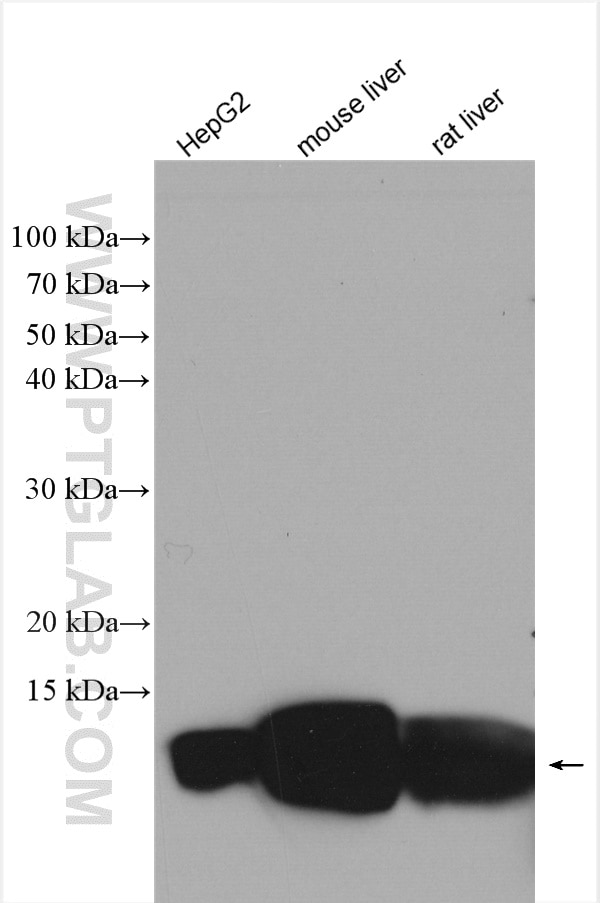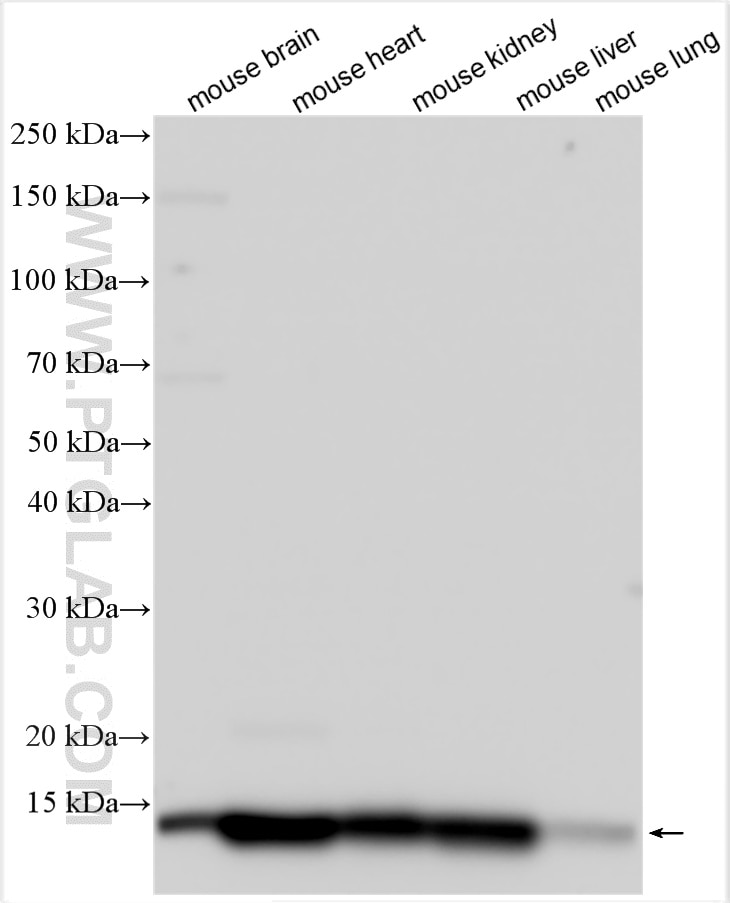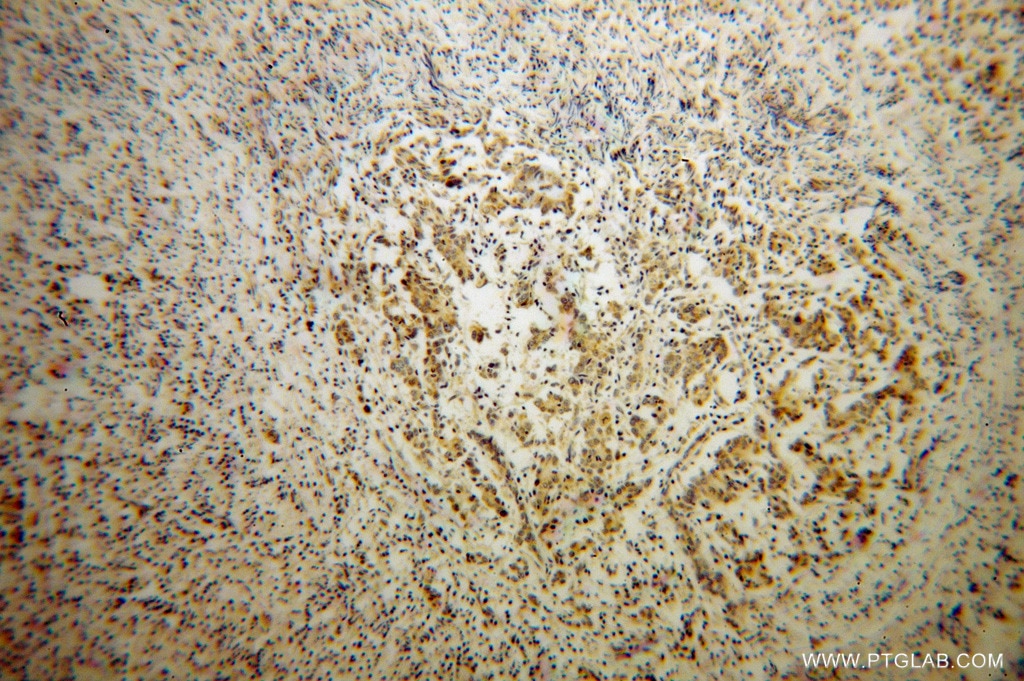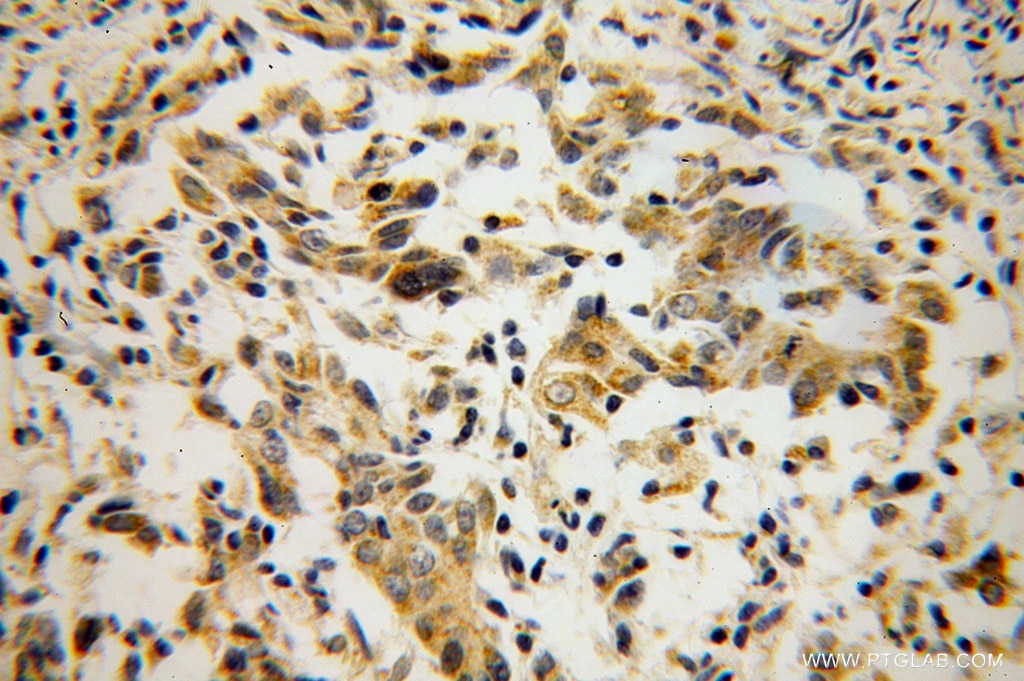SDHC Polyklonaler Antikörper
SDHC Polyklonal Antikörper für IHC, WB, ELISA
Wirt / Isotyp
Kaninchen / IgG
Getestete Reaktivität
human, Maus, Ratte und mehr (1)
Anwendung
WB, IHC, ELISA
Konjugation
Unkonjugiert
Kat-Nr. : 14575-1-AP
Synonyme
Galerie der Validierungsdaten
Geprüfte Anwendungen
| Erfolgreiche Detektion in WB | HepG2-Zellen, Mausherzgewebe, Maushirngewebe, Mauslebergewebe, Mauslungengewebe, Mausnierengewebe, Rattenlebergewebe |
| Erfolgreiche Detektion in IHC | humanes Mammakarzinomgewebe Hinweis: Antigendemaskierung mit TE-Puffer pH 9,0 empfohlen. (*) Wahlweise kann die Antigendemaskierung auch mit Citratpuffer pH 6,0 erfolgen. |
Empfohlene Verdünnung
| Anwendung | Verdünnung |
|---|---|
| Western Blot (WB) | WB : 1:500-1:2000 |
| Immunhistochemie (IHC) | IHC : 1:20-1:200 |
| It is recommended that this reagent should be titrated in each testing system to obtain optimal results. | |
| Sample-dependent, check data in validation data gallery | |
Veröffentlichte Anwendungen
| WB | See 7 publications below |
| IHC | See 1 publications below |
Produktinformation
14575-1-AP bindet in WB, IHC, ELISA SDHC und zeigt Reaktivität mit human, Maus, Ratten
| Getestete Reaktivität | human, Maus, Ratte |
| In Publikationen genannte Reaktivität | human, Kaninchen, Maus |
| Wirt / Isotyp | Kaninchen / IgG |
| Klonalität | Polyklonal |
| Typ | Antikörper |
| Immunogen | SDHC fusion protein Ag5775 |
| Vollständiger Name | succinate dehydrogenase complex, subunit C, integral membrane protein, 15kDa |
| Berechnetes Molekulargewicht | 19 kDa |
| Beobachtetes Molekulargewicht | 15 kDa |
| GenBank-Zugangsnummer | BC033626 |
| Gene symbol | SDHC |
| Gene ID (NCBI) | 6391 |
| Konjugation | Unkonjugiert |
| Form | Liquid |
| Reinigungsmethode | Antigen-Affinitätsreinigung |
| Lagerungspuffer | PBS mit 0.02% Natriumazid und 50% Glycerin pH 7.3. |
| Lagerungsbedingungen | Bei -20°C lagern. Nach dem Versand ein Jahr lang stabil Aliquotieren ist bei -20oC Lagerung nicht notwendig. 20ul Größen enthalten 0,1% BSA. |
Hintergrundinformationen
SDHC(Succinate dehydrogenase cytochrome b560 subunit, mitochondrial) is also named as CYB560, SDH3 and belongs to the cytochrome b560 family. It is involved in complex II of the mitochondrial electron transport chain and is responsible for transferring electrons from succinate to ubiquinone (coenzyme Q). Defects in SDHC are the cause of paragangliomas type 3 (PGL3) and paraganglioma and gastric stromal sarcoma (PGGSS). It has a transit peptide of 29 amino acid and has 5 isoforms produced by alternative splicing.
Protokolle
| Produktspezifische Protokolle | |
|---|---|
| WB protocol for SDHC antibody 14575-1-AP | Protokoll herunterladen |
| IHC protocol for SDHC antibody 14575-1-AP | Protokoll herunterladen |
| Standard-Protokolle | |
|---|---|
| Klicken Sie hier, um unsere Standardprotokolle anzuzeigen |
Publikationen
| Species | Application | Title |
|---|---|---|
Nat Commun Low chorionic villous succinate accumulation associates with recurrent spontaneous abortion risk. | ||
Nucleic Acids Res Base-excision repair deficiency alone or combined with increased oxidative stress does not increase mtDNA point mutations in mice. | ||
iScience Prevention and regression of megamitochondria and steatosis by blocking mitochondrial fusion in the liver. | ||
PLoS One Quantitative proteomics in A30P*A53T α-synuclein transgenic mice reveals upregulation of Sel1l. | ||
Cell Rep Mitochondrial SENP2 regulates the assembly of SDH complex under metabolic stress | ||
Front Immunol Comprehensive analysis of the prognosis, tumor microenvironment, and immunotherapy response of SDHs in colon adenocarcinoma |





